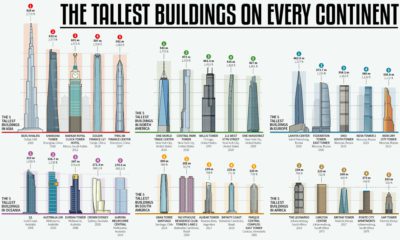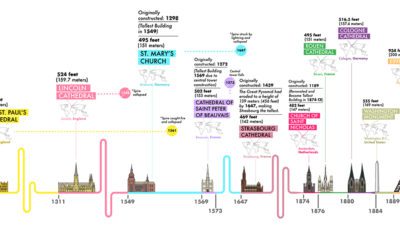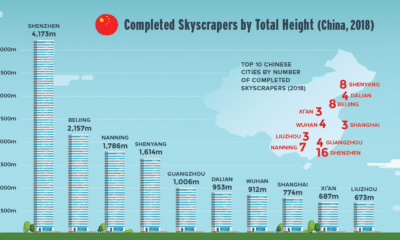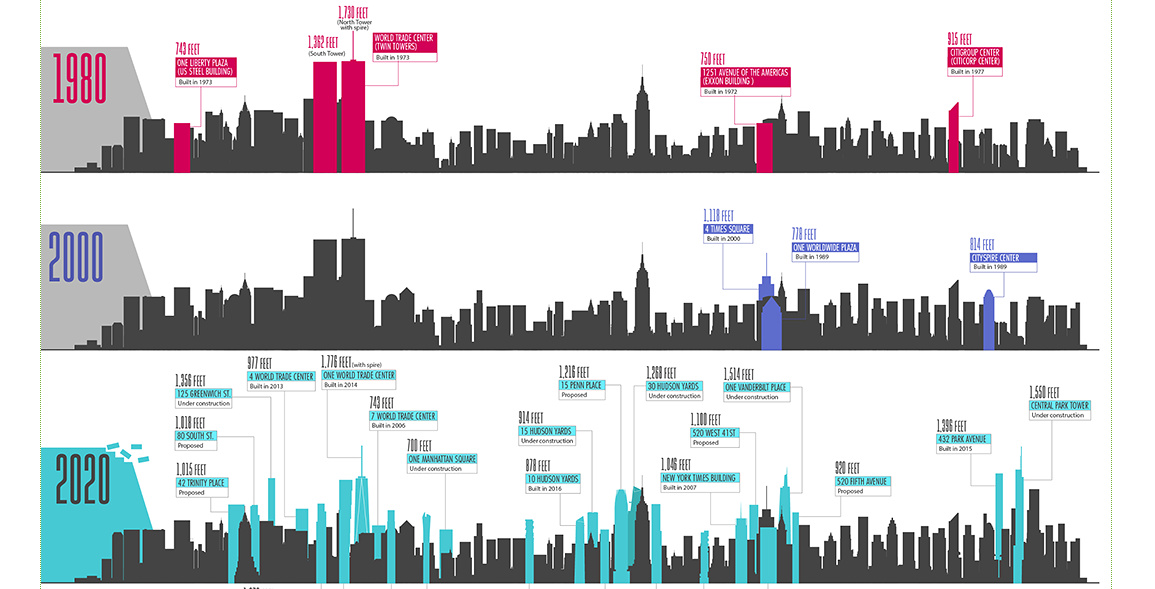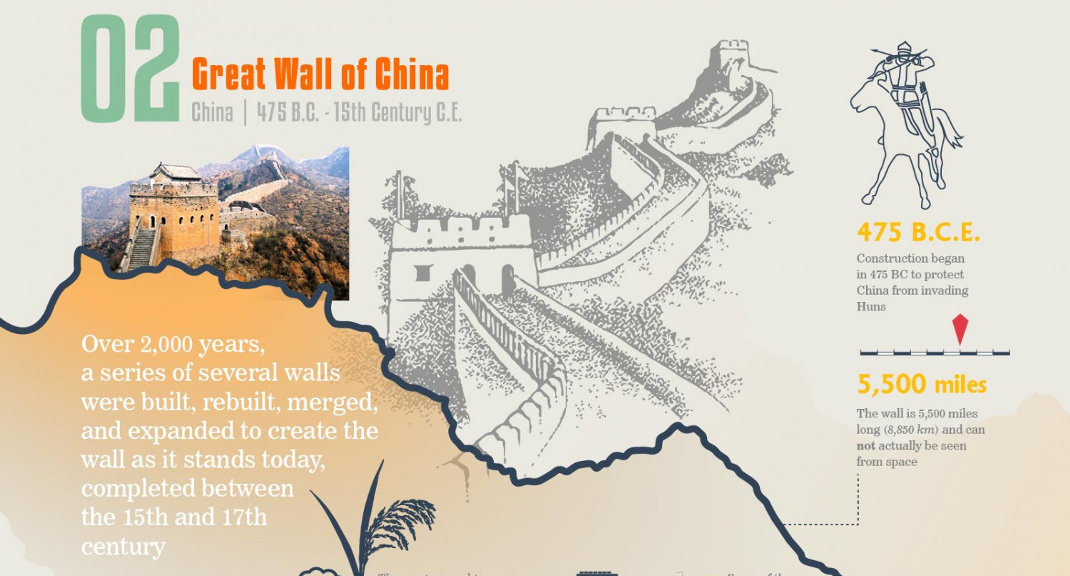Only 24 supertall skyscrapers existed at that time, with half of them located in U.S. cities. That list included iconic structures such as the Empire State Building and Willis Tower, as well as newer landmarks like Atlanta’s Bank of America Plaza. According to the Council on Tall Buildings and Urban Habitat (CTBUH) database, the following buildings comprised the world’s full roster of supertall skyscrapers in 1999: With the exception of the original World Trade Center towers in New York, all these iconic structures are still standing. Of course, there is now a much bigger cohort of skyscrapers sharing the skyline with them today.
20 Years of Supertall Skyscraper Construction
In the 21st century, at least one supertall skyscraper has been completed every year. In 2019 alone, the world built more of these incredible structures than the total that existed in 1999. Here are the 20 tallest skyscrapers completed in the past 20 years: With activity that reflects the country’s meteoric economic rise, China is an obvious point of focus in the skyscraper conversation. The world’s most populous nation been on a remarkable building tear in recent years, with activity spread throughout the country. No fewer than 30 Chinese cities added supertall skyscrapers to their skylines in the past two decades. Vertical construction in the United States has been primarily focused in one of the original skyscraper hubs, New York City. In the long, storied history of skyscraper construction in New York City, it’s interesting to note that 8 of its 10 tallest buildings were built in the past 15 years. Of course, no conversation about skyscrapers is complete without mentioning Dubai. No city on Earth can match the sheer magnitude of supertall skyscraper construction there—a remarkable feat considering the UAE’s size compared to the other two leaders, China and the United States. Over that past 20 years, Dubai added 23 supertall skyscrapers to its skyline, including four that are taller than the Empire State Building. Remarkably, there are another ten buildings under construction today that surpass the 300 meter mark.
What the Future Holds
The process from conceiving to completing supertall skyscrapers can take many years—especially as these ambitious structures reach higher into the sky. For example, the Ping An Finance Center in Shenzhen was first proposed in 2008, but not completed until 2017. This multi-year process means that the pipeline of upcoming skyscrapers is very predictable. According to CTBUH, there are currently 132 supertall skyscrapers in various phases of construction around the world right now. That’s more than five times the number of existing supertall structures that existed at the dawn of the new millennium. This includes the Jeddah Tower in Saudi Arabia, which will be the first skyscraper to hit the one kilometer mark – shattering the record height set by the Burj Khalifa. Over the next 20 years, as economic fortunes shift and architectural innovations advance, it remains to be seen what heights future skyscrapers will reach. on Even while political regimes across these countries have changed over time, they’ve largely followed a few different types of governance. Today, every country can ultimately be classified into just nine broad forms of government systems. This map by Truman Du uses information from Wikipedia to map the government systems that rule the world today.
Countries By Type of Government
It’s important to note that this map charts government systems according to each country’s legal framework. Many countries have constitutions stating their de jure or legally recognized system of government, but their de facto or realized form of governance may be quite different. Here is a list of the stated government system of UN member states and observers as of January 2023: Let’s take a closer look at some of these systems.
Monarchies
Brought back into the spotlight after the death of Queen Elizabeth II of England in September 2022, this form of government has a single ruler. They carry titles from king and queen to sultan or emperor, and their government systems can be further divided into three modern types: constitutional, semi-constitutional, and absolute. A constitutional monarchy sees the monarch act as head of state within the parameters of a constitution, giving them little to no real power. For example, King Charles III is the head of 15 Commonwealth nations including Canada and Australia. However, each has their own head of government. On the other hand, a semi-constitutional monarchy lets the monarch or ruling royal family retain substantial political powers, as is the case in Jordan and Morocco. However, their monarchs still rule the country according to a democratic constitution and in concert with other institutions. Finally, an absolute monarchy is most like the monarchies of old, where the ruler has full power over governance, with modern examples including Saudi Arabia and Vatican City.
Republics
Unlike monarchies, the people hold the power in a republic government system, directly electing representatives to form government. Again, there are multiple types of modern republic governments: presidential, semi-presidential, and parliamentary. The presidential republic could be considered a direct progression from monarchies. This system has a strong and independent chief executive with extensive powers when it comes to domestic affairs and foreign policy. An example of this is the United States, where the President is both the head of state and the head of government. In a semi-presidential republic, the president is the head of state and has some executive powers that are independent of the legislature. However, the prime minister (or chancellor or equivalent title) is the head of government, responsible to the legislature along with the cabinet. Russia is a classic example of this type of government. The last type of republic system is parliamentary. In this system, the president is a figurehead, while the head of government holds real power and is validated by and accountable to the parliament. This type of system can be seen in Germany, Italy, and India and is akin to constitutional monarchies. It’s also important to point out that some parliamentary republic systems operate slightly differently. For example in South Africa, the president is both the head of state and government, but is elected directly by the legislature. This leaves them (and their ministries) potentially subject to parliamentary confidence.
One-Party State
Many of the systems above involve multiple political parties vying to rule and govern their respective countries. In a one-party state, also called a single-party state or single-party system, only one political party has the right to form government. All other political parties are either outlawed or only allowed limited participation in elections. In this system, a country’s head of state and head of government can be executive or ceremonial but political power is constitutionally linked to a single political movement. China is the most well-known example of this government system, with the General Secretary of the Communist Party of China ruling as the de facto leader since 1989.
Provisional
The final form of government is a provisional government formed as an interim or transitional government. In this system, an emergency governmental body is created to manage political transitions after the collapse of a government, or when a new state is formed. Often these evolve into fully constitutionalized systems, but sometimes they hold power for longer than expected. Some examples of countries that are considered provisional include Libya, Burkina Faso, and Chad.


